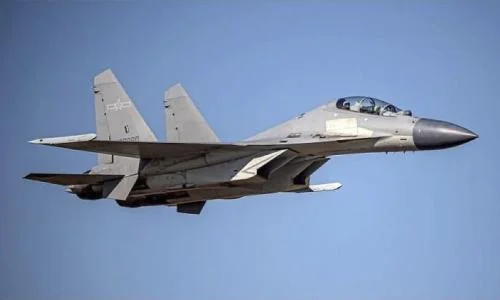On Sunday, Taiwan’s Ministry of Defense reported detecting 37 Chinese military aircraft, including fighter jets, drones, and other aircraft, approaching Taiwan’s airspace in what it described as “long-distance” training exercises by Beijing. This escalation is part of a pattern of increasing Chinese military activity in the Taiwan Strait and near the island, aimed at pressuring Taiwan to accept Beijing’s claim of sovereignty over it.
The sightings began at around 9:00 am local time (0100 GMT), with 35 of the detected Chinese aircraft crossing the median line of the Taiwan Strait. This median line, an unofficial boundary that once helped to maintain a measure of stability between the two sides, is increasingly disregarded by Beijing as it asserts its stance on Taiwan.
According to Taiwan’s defense ministry, the aircraft proceeded through Taiwanese airspace toward the Western Pacific Ocean, illustrating the growing range and intensity of Beijing’s training operations.
In response, Taiwan’s military scrambled its own aircraft, deployed naval vessels, and activated shore-based missile systems to monitor the situation and prepare for any further escalations. The deployment serves as a reminder of Taiwan’s vigilance in the face of mounting military pressure from the People’s Liberation Army (PLA).
This surge in activity follows a recent trend. Just the day before, Taiwan had reported detecting a “joint combat readiness patrol” conducted by the Chinese military, which involved a mix of fighter jets and warships encircling the island. Over the 24 hours leading up to Sunday morning, Taiwan tracked 27 Chinese aircraft and six warships operating near the island.
READ ALSO: Moscow Rejects ‘Baseless’ Accusations of Russian Involvement in Fake US Election Videos

China views Taiwan as a breakaway province and has never ruled out using force to reclaim the democratic, self-ruled island. As part of this ongoing stance, Beijing has significantly increased its military drills in the region, which it claims are intended to “safeguard national sovereignty.”
In August, China held large-scale exercises around Taiwan, drawing swift condemnation from Taipei and its primary ally, the United States. Washington has repeatedly warned against any unilateral changes to the status quo by force and has underscored its commitment to Taiwan’s security.
Chinese military operations near Taiwan have also become more complex and coordinated. In late September, Taiwan’s defense ministry observed Chinese “long-distance training flights,” which included a reported intercontinental ballistic missile test into the Pacific Ocean.
These maneuvers suggest that China is not only focused on displaying its military reach but is also refining its ability to operate across different theaters simultaneously.
The situation highlights the strategic tension between China’s ambitions for regional dominance and Taiwan’s determination to maintain its autonomy. As Beijing ramps up pressure, Taiwan’s allies, particularly the United States, face an increasingly delicate balancing act: maintaining peace and stability in the region while supporting Taiwan’s security.

